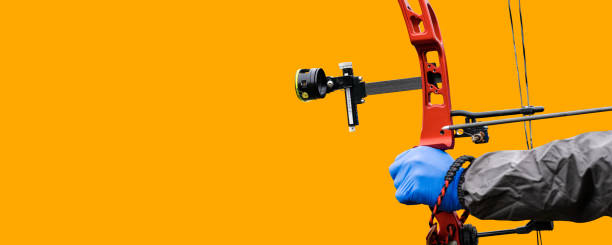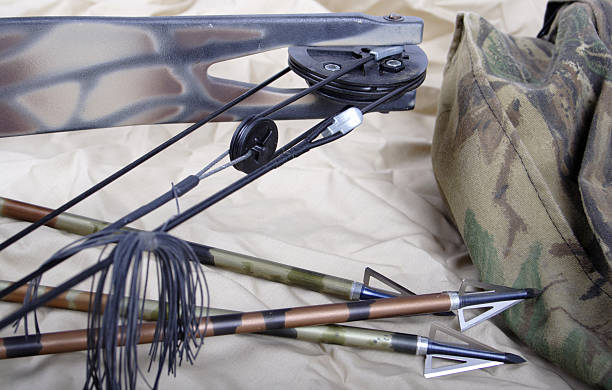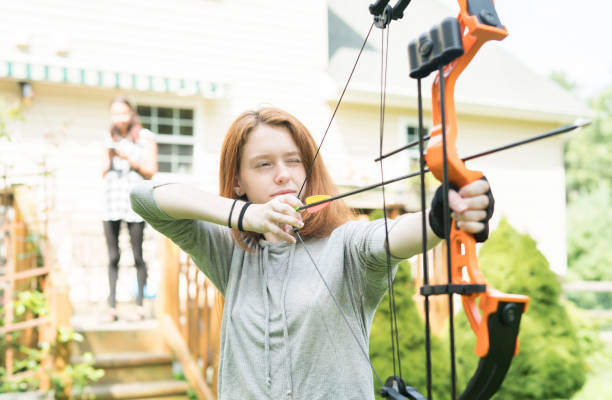Bowhunting heavily utilizes arrow rests. An arrow rest improves the consistency and accuracy of your shots whether you’re shooting field points or hunting small game. But I’ve noticed that a lot of people are unsure of whether they require an arrow rest for their bow or not.
Therefore, the question is whether a compound bow needs an arrow rest. Yes, arrow rests help improve your shooting accuracy and make shooting a bow more comfortable. To shoot accurately, arrows must be held in a specific position. Without a proper arrow rest, your indicators will be shaky, which will cause you to miss your target.
The significance of an arrow resting on various bow types will now be covered in this article. Read on!
Are Arrow Rests Necessary?
In the world of hunting, arrow rests are a common sight, but what purpose do they serve? Unrelated to the type of bow, an arrow rest is an essential component.
Here are five reasons why:
1. A stable shooting platform is provided by the arrow rest.
2. It enables precise and accurate bow aiming.
3. Your shot patterns will remain consistent, improving your accuracy and hunting outcomes.
4. Your shooting form and overall skill can be enhanced by using an arrow rest properly.
You might be losing out on some of the advantages an arrow rest can offer if you’re not using one.
Do You Need An Arrow Rest on a Compound Bow
Arrows can be used for pointing as well as shooting. Compound bows are frequently used for arrow hunting, though some hunters forego the arrow rest.
Absolutely, a compound bow needs to have an arrow rest. A shelf cannot be utilized for a compound bow, as opposed to a longbow or recurve. Without an arrow rest, which supports the arrow slide away when it is pushed out of the bow, there is a high risk of injury.

Different Types of Arrow Rest
Side Pressure
This kind of arrow rest is typically found on recurve bows, as was previously mentioned. These arrow rests have a canted rest; therefore, the arrow is pushed by gravity to one side of the arrow rest. The arrow must be pointed to the left (if you are a right-handed archer) when using these kinds of arrow rests to prevent hitting the riser. Through the archer’s paradox, this ensures that the arrow flexes around the riser. More details about the archer’s paradox are provided in the video below.
Recurve archers frequently employ a tool called a plunger (also known as a button) to adjust the archer’s paradox. With the help of this device, you can adjust the arrow’s angle and the amount of pressure being applied. I won’t go into further detail about side pressure arrow rests because the majority of compound archers don’t use them. If you are considering a side pressure arrow rest, the article below will be helpful:
Shoot Through
Shoot-through arrow rests are used by nearly all compound archers. You can install a shoot-through arrow rest without having to aim the arrow at an angle. The arrow is simply positioned in the string’s middle. As a result, the plunger doesn’t need to be tuned because it isn’t necessary.
As a result, shoot through arrow rests are more practical and less likely to result in clearance problems. It can occasionally be challenging to set up the plunger on a recurve, but getting it wrong will reduce accuracy.
Because the arrow isn’t bending around the riser, shoot through arrow rests are also typically more forgiving. Therefore, minor inconsistencies will not cause clearance issues that influence the arrow.
Shoot through arrow rests are generally more practical and improve bow accuracy. Shoot-through arrow rests are only used by recurve archers because they are against World Archery regulations (11.1.1). Shoot-through arrow rests are permitted in compound archery competitions; as a result, the majority of compound archers use this kind of arrow rest.
What to Consider When Choose Arrow Rest
How Well It Retains the Arrow
Even though it might seem obvious, it’s still important to take this into account when choosing your arrow rest. You probably won’t need to worry too much about this if you are shooting in the field. But this is something that you should think about, especially for hunters who frequently have to shoot from awkward positions. You need to let the bow down and draw again once the arrow has left the rest.
Target archers find this annoying, but hunters are particularly adversely affected. Archers shooting at targets only need to draw their bows once more. However, if you’re a hunter and you draw again, the target might move. As a result, compared to target arrow rests, hunting arrow rests tend to hold the arrow in place more securely.
Interference With the Arrow
All of the arrow’s length will travel along the arrow’s rest after it is shot. As a result, after you fire the shot, the arrow can strike the arrow’s rest. As a result of the arrow being slightly pushed when this occurs, the shot will be less accurate.
As a result, fixed arrow rests made for archery are always made of materials that are springy. Consider the spring steel launcher plate or the bristles on a whisker biscuit arrow rest, for instance. They minimize the amount of interference by utilizing springy materials. The material will still have some impact on the arrow’s flight pattern because it still strikes it after the shot is fired.
There is always a trade-off between arrow retention and interference when using fixed arrow rests. Arrow rests that retain the arrow well will interfere more with the flight of the arrow, thereby influencing accuracy. Archers using fixed arrow rests must therefore balance these two qualities.

Complexity and Maintenance
You might wonder why not all archers use a drop away arrow rest after reading the next two sections. They hold the arrow quite firmly in place and remove all obstructions from the arrow completely. So, it appears to be the best choice overall.
That is accurate, but there is also another factor to take into account. Installing drop away arrow rests correctly is very challenging. Additionally, since the arrow rest is more complex, it is more likely to break. For instance, the arrow rest won’t be pulled upward when the cord snaps. The arrow rest won’t retract either when the spring brakes.
Drop away arrow rests need more upkeep and expertise because of this. They are also more likely to fail because they are more complicated. When the arrow rests malfunctions, you will either be unable to shoot or your shots will be incredibly inaccurate.
Adjustability
These micro-adjustment systems are generally beneficial for sight because they let you fine-tune your sight. Most archers use a sight with this system because you often have to adjust it for different distances and windage.
This isn’t always the case with arrow rests, so generally speaking, you should keep yours stationary. You shouldn’t alter your arrow rest once it is centered and at the appropriate height. As a result, the majority of archers won’t move their arrow rest unless they are making significant changes to their equipment.
Summary: It’s Necessary
Using an arrow rest makes shooting a bow more comfortable and increases shooting accuracy. For accurate shooting, arrows must be held in a specific manner. Your indicators will be unstable without a proper arrow rest, which will cause you to miss your target.

